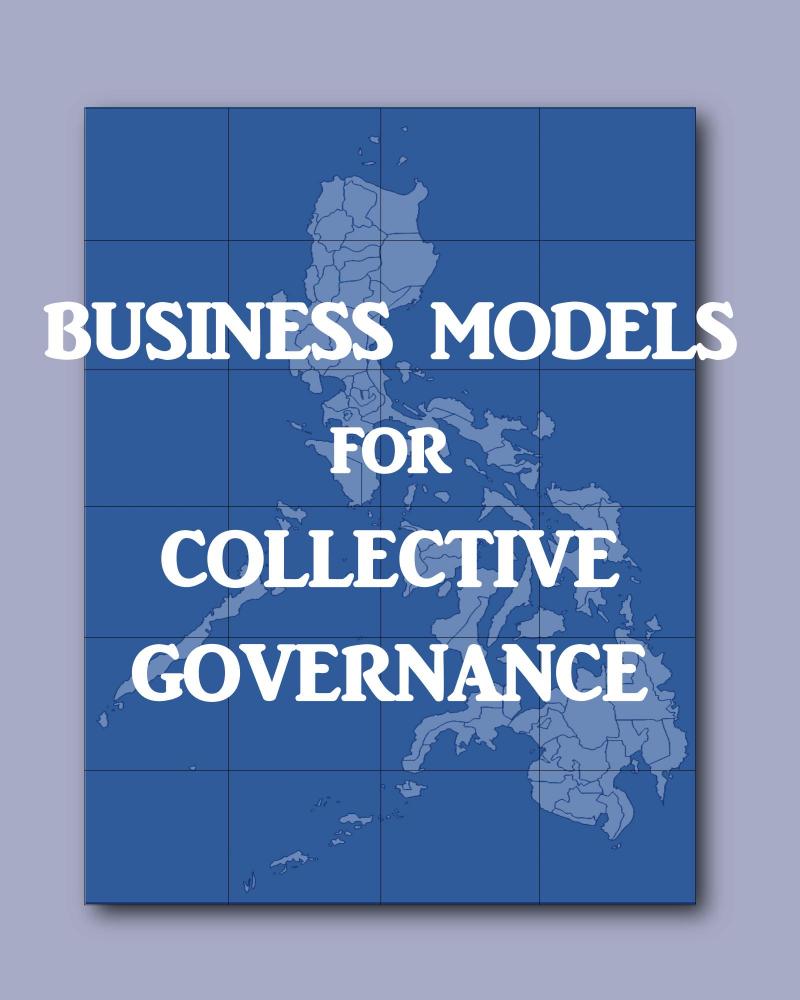Global Green Technologies
Corporation
"Business Models for Collective Governance"
NY
United States
edb
Bookstore
Business Models for Collective Governance (Philippines)

334 pages
ORDER NOW
1. U.S.A. and Canada
a. Softcover, 79.50 USD (Plus Tax, Free
Ground Shipping)
b. Hardcover, Image Wrap, 94.50 USD
(Plus Tax, Free Ground Shipping)
2. Philippines
a. Softcover, 79.50 USD (Plus Tax,
Free Shipping by Mail)
3. Other countries, Please place your order according to your preference.
a. Blurb (Softcover) or Hardcover)
b. Amazon (Softcover only)

Contents
I THE APPLICATION AND THE FUNDING OF BUSINESS MODELS
1 The Application of Business Models
2 The Rural Infrastructure Investment Fund
3 From Foreign Aid to Foreign Investment
4 Infrastructure Bond Financing and Pooled Financing
5 The “Swiss private banker”
6 Understanding the Global Financial Reset,
II BUILDING AND MAINTAINING INFRASTRUCTURE
7 The Engineering Brigade in Public-Private Partnership
8 Building the Food Park Infrastructure for National Agricultural Modernization
9 The Plasma Gasification Technology for Waste-to-Energy Generation
10 The Electric Bus Assembly Plant for Urban and Rural Transport Modernization
11 A Model Community-Based Research and Teaching Hospital Infrastructure
12 The Housing Project: A Planned Community
13 The Candaba Delta/Candaba Swamp Integrated Infrastructure Project
III INTEGRATED AND COMMUNITY-BASED DEVELOPMENT OF INDUSTRY
14 The Integrated Rice Milling District Model
15 The Warehouse Store of Agricultural Inputs and Machinery
16 The Coconut Industry Development Business Model
17 Organized Community-Based Agroforestry
18 Community-Based Mining Business Model
19 The Philippine Products for the U.S. Foreign Trade Zones
20 The Agribusiness Complex Business Model
21 The Fish Farming Complex Business Model
IV COOPERATIVE FOR DEVELOPMENT
22 The Cooperatives Business Model for Socioeconomic Development
23 Business Model for a National Transport Cooperative
24 Business Model for the Commercialization of Cooperative Banks
25 The Onion and Cold Storage Corporation: A Tripartite Cooperative-Private Sector- Government Partnership
26 Umbrella Cooperative for the Veterinary and Animal Husbandry Services
V. TECHNICAL TRAINING SOLUTION
27 The Training Center for Welders
28 The Central Luzon Science Education Center
29 The College of Business and Public Governance: The Anchor Institution of the Global University Program
30 The Central Luzon State University: A Model Self-Sustaining State University
31 Putting UPLB Agricultural Economics First
32 The Philippine Studies Center in the U.S.
VI INTEGRATION OF BUSINESS MODELS FOR INCLUSIVE DEVELOPMENT
33 The Masbate Investment Agenda: Developing The Central Hub of the Philippine Nautical Highway System
34 The Solidaridad 2020 National Investment Agenda
· Solidaridad 2020 Main Agenda
· Solidaridad 2020 River Basin Agenda
· Solidaridad 2020 Inter-island Agenda
· Solidaridad 2020 Urban Agenda
35 The Economic Warfare Model for Peace in the Philippines
36 Disaster Preparedness Model: The Inclusive Approach to Cope El Niño
37 Outline of the Grand Experiment for Inclusive Development
38 Collective Governance for Inclusive Development
THE FRONT COVER STORY
The grid lines superimposed on the map of the archipelago of the Philippines symbolize “the grand experiment for inclusive development” that eventually transitions into “collective governance.”
The gridlines also signify the application of two most basic principles in experimental design, which are replication and randomization. Together with the resulting rectangular cells, the grid lines also serve as the rules and guides in conducting experiments for purposes of continuously verifying and testing the business models.
Individually, the operational structure of every business model is aligned towards its efficient and effective adaptation to the target geographical areas and across the country’s population. The components and the systems in the operational structure are treated as variables in the testing and verification processes. These variables include project ownership arrangement, management strategies, organizational structure, technology, funding arrangement, community participation, government ownership and control, research and product development system, foreign investment and ownership, private sector participation, project sustainability design, and other operational variables within the business model.
As experiments continue, every inclusive development agenda undergoes the more complex and detailed testing and verification. The benefits derived from the permutations and combinations of the components within a particular business model are calculated. The spatial placements and the temporal sequencing within the business model and the integrated business models in the inclusive development framework are also examined. The application of statistical tools, geographic information system, action research, case studies, systems analysis, operations research, economic surveys, and other traditional and innovative research tools ensure accurate results and analysis. In effect, the rectangular cells, which are connected together by the grid lines to form one whole, serve as the fundamental structure that holds the functional systems together. This structure is also continuously tested for its strength and stability.
The system of development experiment that progressively evolved builds harmonious collaboration among the stakeholders. The active and the broad-based participation in the development process ensure equitable distribution of benefits. Consequently, these right proportions and arrangements of business models form a structure of beauty, which everybody appreciates.
Finally, in the transformation of the business models to inclusive enterprises, the grid lines and the rectangular cells become the symbol of collective governance.
Copyright this business. All rights reserved.
NY
United States
edb
